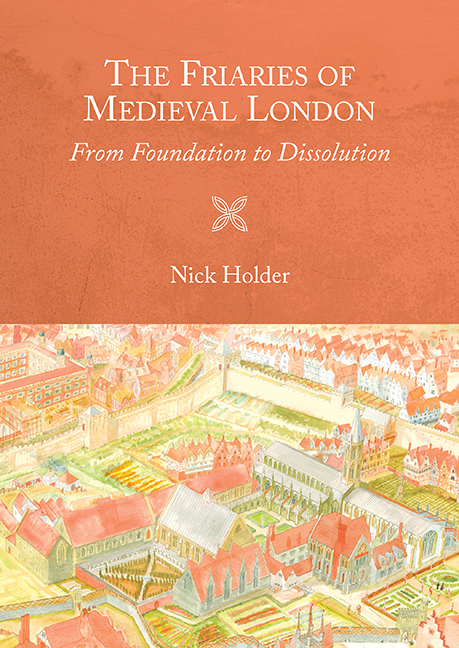Summary
IN the Introduction to this book I stated its purpose: to reconstruct the urban landscape of the seven medieval friaries of London, and to understand something of the experience of the friars and visitors who used them. Using the available evidence (800 or so documents, nearly one hundred archaeological excavations and a handful of maps: Table 2), the authors have attempted to describe and analyse these medieval friaries. Focusing for a moment on the numbers, one can note that by the sixteenth century the friars’ precinct walls enclosed 20 acres of valuable urban land, about 5% of the whole walled city of London (8.1ha out of 143ha; 20 out of 353 acres), and the suburban White Friars accounted for another 5 acres (2.1ha). This simple numerical expression of the friars’ footprint in the city shows just how important the friars were to the Londoners and other patrons who had paid for the friaries. The 160 or so friars living in the five friaries in the fifteenth century constituted less than 0.5% of the population of the city; put another way, this elite group of religious men had about twenty times as much space as the average Londoner.
Turning to the methodology of studying these friaries (and other urban monastic houses), the present study continues the interdisciplinary academic tradition of monastic studies pioneered by late nineteenth-century archaeologist-historians such as William St John Hope. If historians studying British monastic sites lack the art-historical material available to colleagues working in, say, northern Italy (think of Assisi with its surviving medieval basilica complete with Giotto's late thirteenth-century fresco cycle), we have to make the most of the evidence we have. The strand of evidence that has perhaps been undervalued, but which lies behind most of the maps and plans in this book, is the use of historic maps and map regression (Introduction, ‘The approach of this book’; Figure 2). By working backwards in time from modern maps to sixteenth-century maps, the size and some of the internal patterns of the monastic precincts can be understood.
- Type
- Chapter
- Information
- The Friaries of Medieval LondonFrom Foundation to Dissolution, pp. 313 - 324Publisher: Boydell & BrewerPrint publication year: 2017

